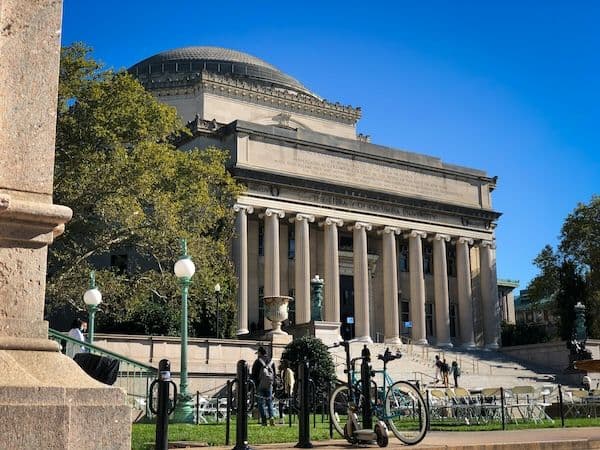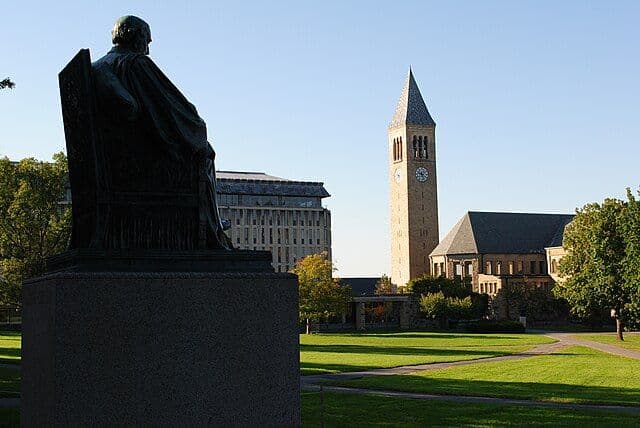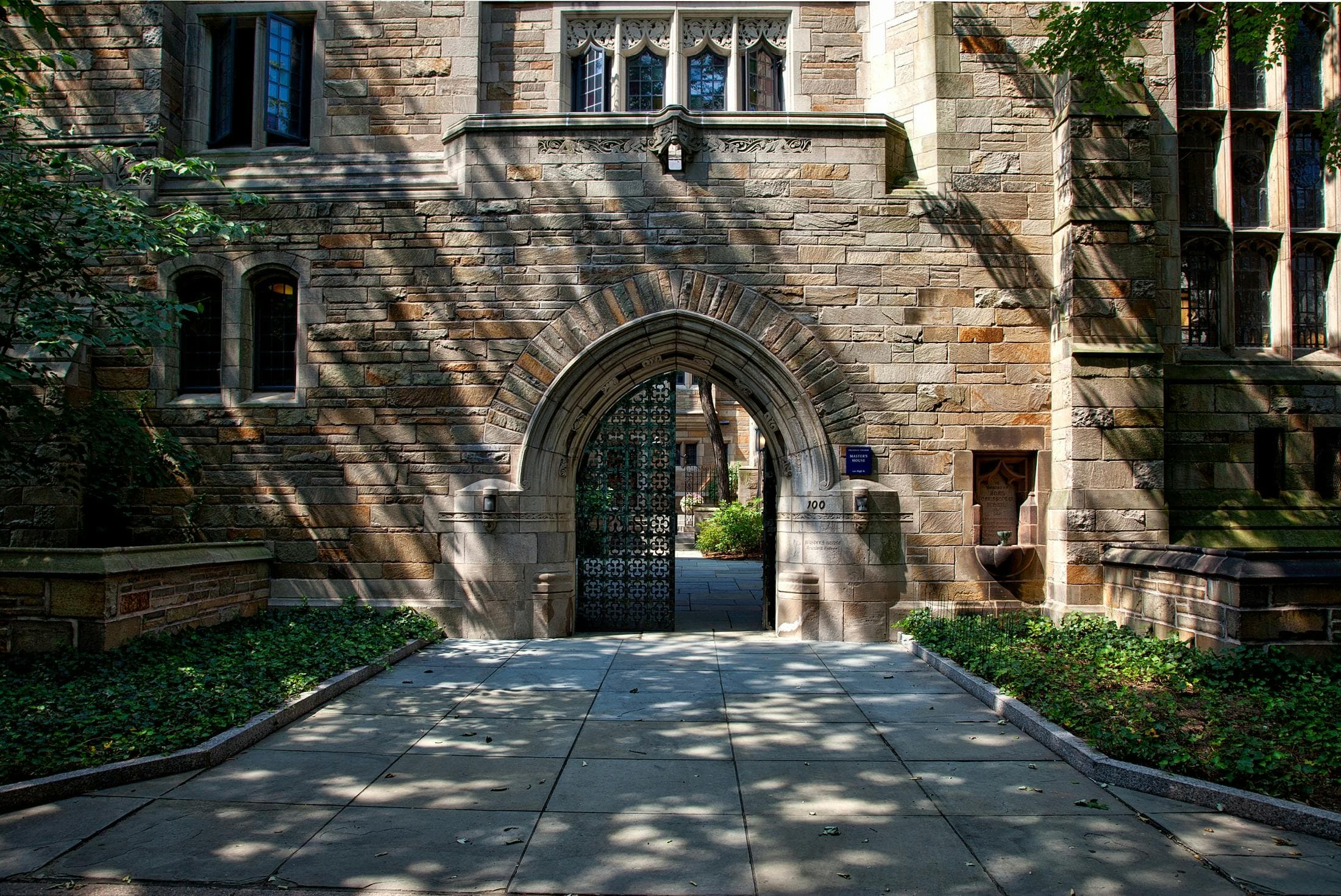
How to Get Into Columbia: Secrets to Standing Out in Admissions
Discover essential tips and strategies on how to get into Columbia from college admissions expert John Morganelli.

Photo by Santeri Liukkonen on Unsplash
It’s no secret that Ivy League admissions are extremely competitive. Getting into an Ivy League institution requires extraordinary academic performance and intense preparation. While each institution has a similar barrier to entry, they each also have unique qualities that they’re looking for in their students. This blog details the specifics of getting into Columbia University.
For a more general overview of getting admitted to an Ivy League college, check out this blog.

Public Domain
Why Choose Columbia?
Out of the 8 Ivy League institutions, what makes students pick Columbia? The reasons vary from the deeply intellectual to the strategically practical. Here are the top reasons we see students choosing Columbia over other schools.
- The Core Curriculum: A Philosopher’s Playground. Columbia’s Core Curriculum is unlike anything else in the Ivy League. It promises students a shared intellectual experience—reading canonical texts in literature, philosophy, art, and science—and asking big questions with peers from all majors.
- New York City: The Ultimate Lab. Columbia students don’t just study New York—they live it. Whether you're studying urban sustainability, economic inequality, or the psychology of art, NYC becomes your lab.
- Interdisciplinary and Hybrid Majors. Columbia encourages cross-disciplinary work. Students can double major or explore hybrid areas (e.g., Sustainable Development, Medical Humanities, Data Science + Urban Studies) that don’t exist elsewhere.
- Global Perspective, Local Application. Through programs like the Global Core, Double Discovery Center, and Columbia World Projects, students aren’t just reading about global challenges—they're solving them.
- Elite Access, Tight Community. Even though Columbia is in the heart of NYC, the undergraduate experience (especially in Columbia College) is surprisingly intimate. Students share seminar-based classes, dorms, and a tight-knit intellectual community.
- Proximity to Power: Internships and Networking. Whether you're interested in finance (Wall Street), journalism (NYT, NBC), fashion (Condé Nast), or biotech (Mount Sinai), Columbia students are just a subway ride from career-altering opportunities.
- The Columbia “Edge”. Let’s be real—Columbia has a certain vibe. Intellectual intensity. Cosmopolitan edge. It draws students who are purpose-driven, introspective but restless, and drawn to contradiction and complexity.
Columbia University Admissions Overview + Criteria
Application Platforms + Deadlines
Platforms: Common Application or Coalition Application (via Scoir)
Required Components:
- Personal Statement (Common App Essay)
- Columbia-Specific Supplemental Essays
- Activity List (10 max)
- Official transcripts
- School report + counselor recommendation
- Two teacher recommendations
- SAT/ACT (optional, but recommended if strong)
- Optional: Additional Information section (critical for Morganelli Method students)
Deadlines:
- Early Decision (ED): November 1 (Binding)
- Regular Decision (RD): January 1
What Columbia Evaluates (and How)
Columbia uses a holistic review process, but in practice, they’re evaluating based on three key categories:
| Category | What It Means | "Our" Angle |
| Academic Excellence | Transcript rigor, GPA, test scores, class rank | Must match Columbia’s intense academic culture (A+ across core areas; especially strong in major-aligned subjects) |
| Intellectual Vitality | Evidence of curiosity, inquiry, depth of thought | Best shown through research questions, thematic essays, and narrative depth—hallmarks of the Morganelli Method |
| Contribution to Community | Leadership, impact, perspective, diversity | Must show how you’ll contribute to Columbia’s Core community and NYC engagement platforms |
Hidden criteria: Columbia places high value on cohesion of story and the ability to contribute to the Core conversation. If your narrative doesn't make sense in their classroom model, you're out.
The Role of the Columbia Core in Evaluation
Columbia’s Core isn’t just a curriculum—it’s a filter. Reviewers are asking:
- Will this student thrive in small seminar-based classes where shared texts matter?
- Can they read, write, and debate with depth and nuance?
Essays, activities, and intellectual direction must show:
- Comfort with abstract thinking
- Ability to make interdisciplinary connections
- A desire to ask and explore hard questions
Supplemental Essays: Where Columbia Separates Candidates
These matter more at Columbia than almost anywhere else in the Ivy League. Why? Because the prompts are precise, list-based, and intellectually charged. For example:
- List the books you read for pleasure this year.
- Why Columbia? (must reference actual Core classes, NYC opportunities, etc.)
- What attracts you to your intended area of study?
Scroll down to see how our Admission’s expert, John Morganelli, suggests using these to your advantage.
Admissions Committee Review
Columbia uses committee-based evaluations, meaning:
- Two readers assess your file and score it.
- If scores diverge or you're borderline, a committee discusses it.
- Final decisions often depend on:
- Institutional priorities (diversity, geography, major balance)
- Narrative clarity
- School-specific competitiveness (Columbia College vs. SEAS)

Photo by Chenyu Guan on Unsplash
How Hard Is It to Get Into Columbia University?
We would describe Columbia as brutally competitive. Here’s what the data shows.
Columbia University Acceptance Rate
The overall acceptance rate for Columbia is roughly 3.9%, according to data from the Class of 2027 (2023 high school graduates).
Columbia University Early Decision Acceptance Rate
Columbia’s early decision acceptance rate is estimated at 10-12%.
Early Decision vs. Regular Decision
Whether to apply early decision or regular decision to Columbia is highly personal (we recommend running a Columbia “fit check” with one of our College Admissions Experts). Here’s our short answers, though.
Yes, if…You’re confident that Columbia is a top-choice narrative match, your story is ready, and you understand the binding commitment.
No, if…You’re not 100% aligned with Columbia’s Core ethos, your portfolio isn’t ready by November 1, or you want to compare financial aid packages.

How to Get into Columbia: Our Expert Tips
While all prestigious universities expect high levels of excellence, what moves the needle for each school is slightly different. IVY’s Director of College Admissions, John Morganelli, has spent 15+ years in the elite admission’s space and shares his Colombia specific tips below.
1. Prioritize the Columbia Core Curriculum in Narrative Framing
Unlike most other Ivies, Columbia’s Core Curriculum is foundational to its identity. It’s not just a feature — it’s the ethos of the institution. John would advise:
Explicitly address how your curiosity aligns with Columbia’s Core.
- For example, students should reflect on how the Core will sharpen their interdisciplinary thinking or how a specific text or seminar would help them tackle their thematic research question.
- Use supplemental essays (especially the “Why Columbia?”) to connect your intellectual pursuits directly to Core seminar titles, like Contemporary Civilization or Literature Humanities
This type of deep engagement with the curriculum doesn’t translate to schools like Brown, which is defined by its open curriculum, but does make a difference for Columbia.
2. Be Surgical with College-Type Targeting
Columbia has distinct undergraduate divisions:
- Columbia College (CC)
- School of Engineering and Applied Science (SEAS)
- School of General Studies
The Morganelli Method stresses that you must know the differences and build your application accordingly.
- For Columbia College, John encourages ethos-forward, Core-aligned stories rooted in broad intellectual curiosity and interdisciplinary connection.
- For SEAS, the story should still reflect Core alignment but must highlight problem-solving capacity and the application of inquiry to real-world impact.
Most applicants overlook how rigid internal transfers are at Columbia. John discourages students from applying to SEAS “just to get in.” If you’re not actually SEAS-aligned, it can hurt your narrative coherence and chances.
3. Leverage Columbia’s NYC Location for Narrative Authenticity
Columbia doesn’t just happen to be in NYC—the school thrives off of its connection to the city. John would advise:
- Use your research question to demonstrate a New York-relevant angle, even if you're not from the area. Ex: “How can food deserts in Harlem be addressed through AI-driven inventory systems?” (a localized question that ties to both Columbia and NYC).
- Link your advocacy and deliverables to Columbia-affiliated resources like:
- CUSP (Columbia Undergraduate Scholars Program)
- Double Discovery Center
- Mailman School of Public Health (for public policy/public health narratives)
This kind of targeted, urban-aware application positioning does not apply at a rural Ivy like Dartmouth or Cornell's main campus, but is critical for Columbia.
4. Outsmart the Major Bottlenecks
Columbia’s Economics, Political Science, and Computer Science majors are hyper-competitive. John’s strategy?
- Use the “flexible academic approach” (e.g., Public Economics, Human Rights & Tech, Environmental Governance) to retain intellectual depth while lowering competition.
- Columbia allows for interdisciplinary majors, so students can creatively combine themes (e.g., Urban Studies + Data Science), giving them more narrative power.
At Penn or Cornell, you might apply straight to Wharton or ILR; at Columbia, you'd strategically frame your academic path within Columbia College using ethos-aligned hybrid majors.
5. Elevate the Supplemental Essays with PAGE Framing
Columbia’s unique list-style supplements are deceptively hard. John recommends using PAGE (Perspective, Activity, Goal, Ethos) to guide your response to:
- “List the books you read for pleasure” – focus on books that reflect your intellectual curiosity and future direction (not just entertainment).
- “Why Columbia?” – embed your research question organically, showing how Columbia’s specific offerings will let you ask better questions, not just get answers.
This level of PAGE alignment is more essential at Columbia due to the rigidity and specificity of its prompts. At Brown or Yale, with broader prompts, there’s more room for creative storytelling.
Making Your Columbia Dream a Reality
If you read the “Why Columbia” section and got excited, or visited the campus and could perfectly picture yourself there, it’s time to take the steps to make your Columbia dream a reality. We encourage you to look at our advice to 9th, 10th, and 11th graders looking to get into elite universities. While this information isn’t Columbia specific, it’s all valid for Columbia hopefuls and will set you up for success. When it’s time to apply, the advice in this article will help you position yourself as a can’t miss student for next year’s class of Columbia freshmen.
Looking for expert, personalized advice on getting into Columbia - or any top 25 universities? Set up a free consultation with our college admissions experts.




